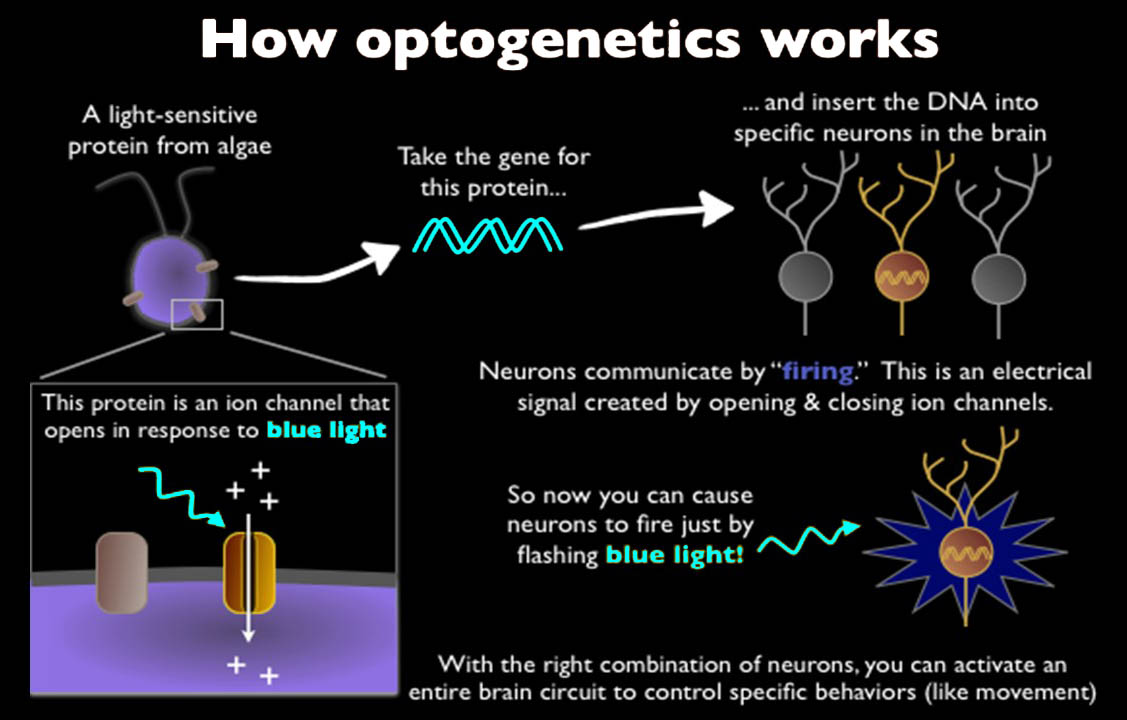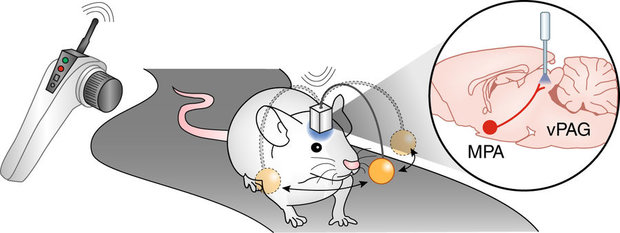https://gadgtecs.com/wp-content/uploads/2018/04/optogenetica.jpg
Researchers at the Korea Advanced Institute of Science and Technology recently created cyborg mice that obeyed the instructions of their human overlords, ignoring sex and food cravings entirely, to make it thorough a maze. To do that, the team of scientists “hacked” into the mice’s brains utilizing a method known as optogenetics — a process during which fiberoptic threads (or similar instruments) are inserted into the brain to control the activity of neurons in living tissue. Turning these threads on and off have an effect on light-responsive proteins, influencing their function.
[caption id="attachment_3368" align="alignnone" width="1127"] How optogenetics works[/caption]
How optogenetics works[/caption]
For this experiment, researchers made a mouse crave a ball that was placed in front of it, then chase it wildly. Turning the signal off immediately made the mouse utterly disinterested in the ball. Whether the mice seemed utterly bewildered by their dramatic change in desires was not altogether clear (or, at least, observable).
Subsequent, the researchers took control of the cyborg mouse, steering it via a vicious trial maze of distractions: a feminine mouse in heat, an Indiana-Jones-like bridge obstacle, and loads of scrumptious meals. With the mind-control switch flipped to “on,” the scientists were in a position to steer the mouse straight to the other end of the maze.
And what’s the purpose, you might rightfully ask? The researchers imagine the technology might assist officials to control animals needed to complete scent-sensitive missions, like landmine detection, search and rescue, and sniffing out drugs.
[caption id="attachment_3367" align="alignnone" width="620"] Source: IEEE[/caption]
Source: IEEE[/caption]
Compared to the stiff, stumble-prone (yet determined) robots of today, animals are way more agile and able to cross treacherous terrain. “Animals are naturally capable of living and moving through complicated environments and, of course, don't need batteries,” Daesoo Kim, team leader, tells IEEE Spectrum.
YOU MAY LIKE: New Smart Robots in The Neighborhood!
Indeed, scientists have created “remote-controlled” animals before, mostly as a proof of concept. Last year the research team developed a “parasitic robot” that was mounted to the back of a turtle, and controlled its movements with a “heads-up LED display” and feeder. In 2012, researchers created cyborg cockroaches that manipulated its sensory organs with the use of a wireless transmitter glued to its back, however with exterior stimuli, not optogenetics.
[embed]https://youtu.be/4rwkU-EmGF0[/embed]
You might marvel when this sort of technology could possibly be used in people. There are medical uses for deep mind stimulation, such as treatments of Parkinson’s disease. However as for using optogenetics to help us avoid junk foods, seems like we’re a ways off.
https://gadgtecs.com/2018/04/03/researchers-can-now-mind-control-mice-using-optogenetics/
Comments
Post a Comment